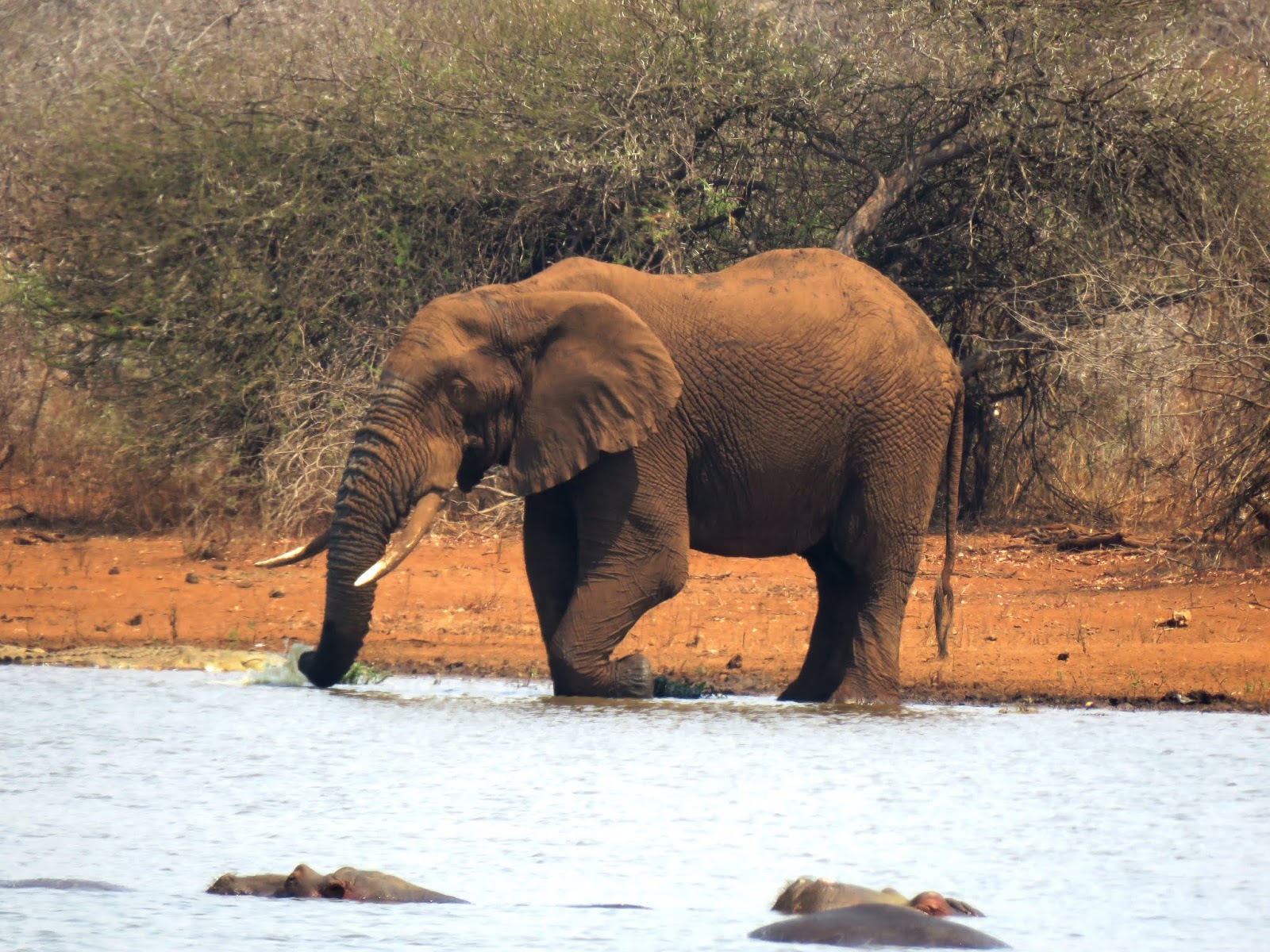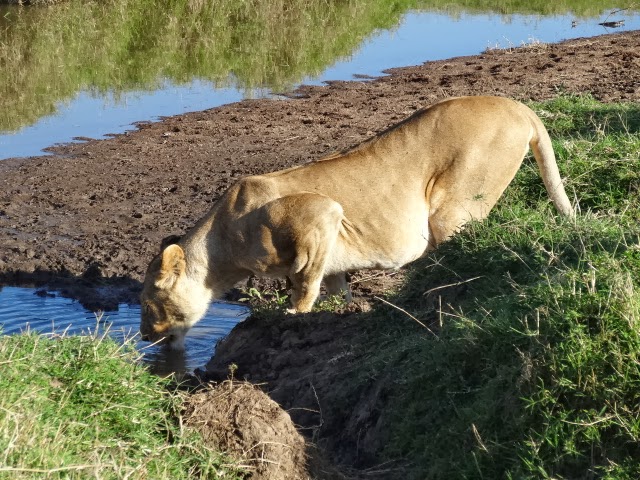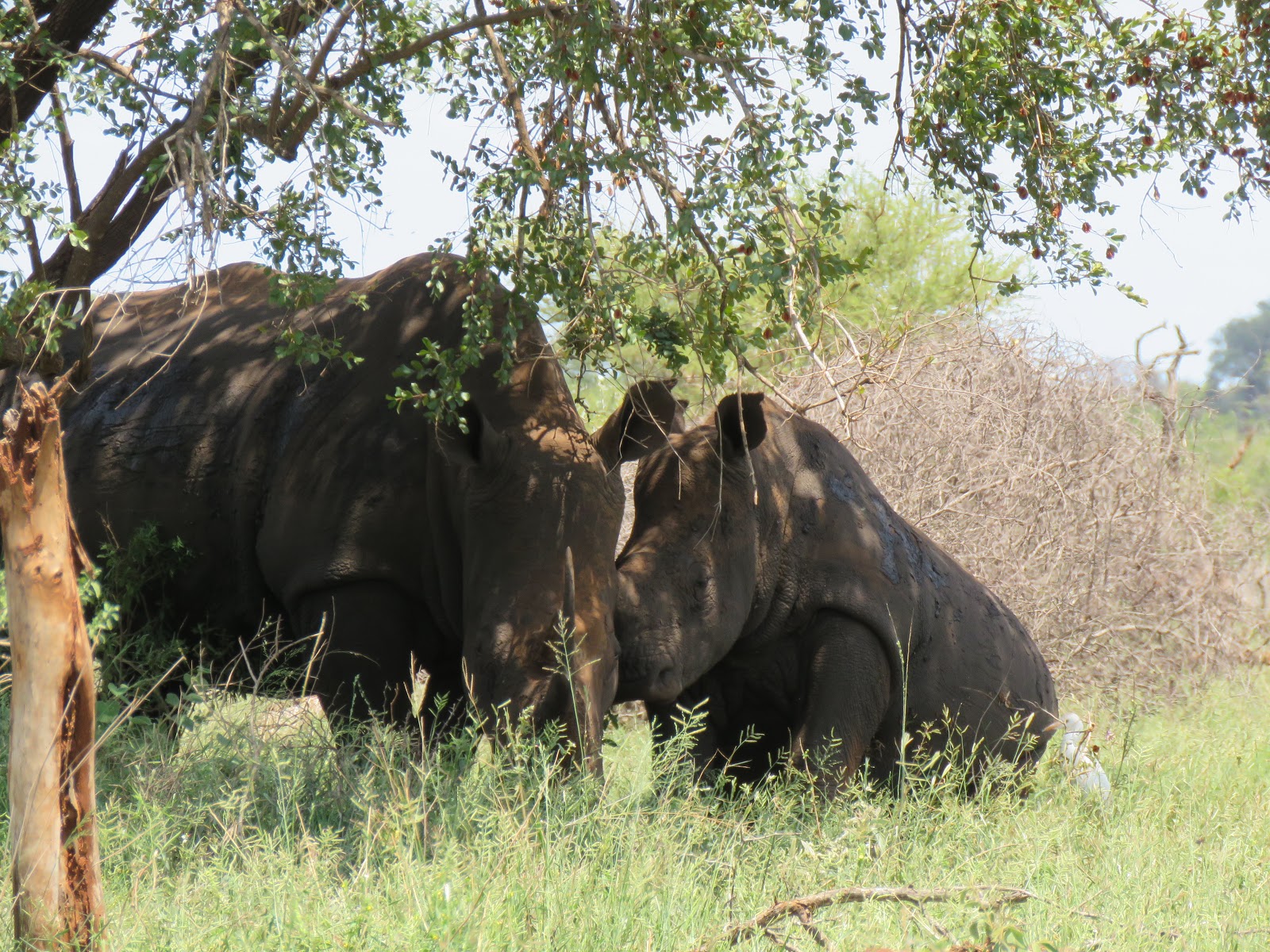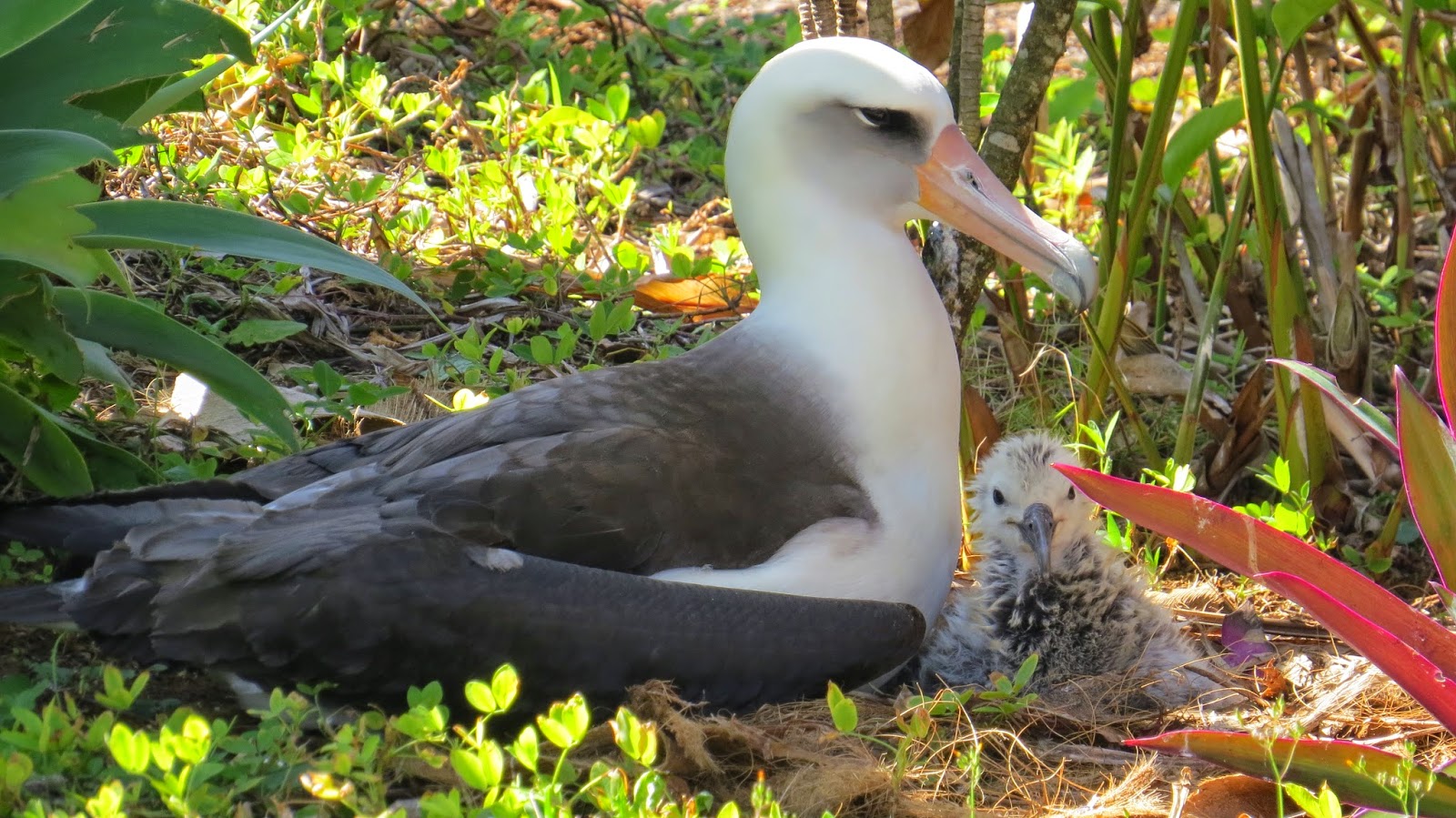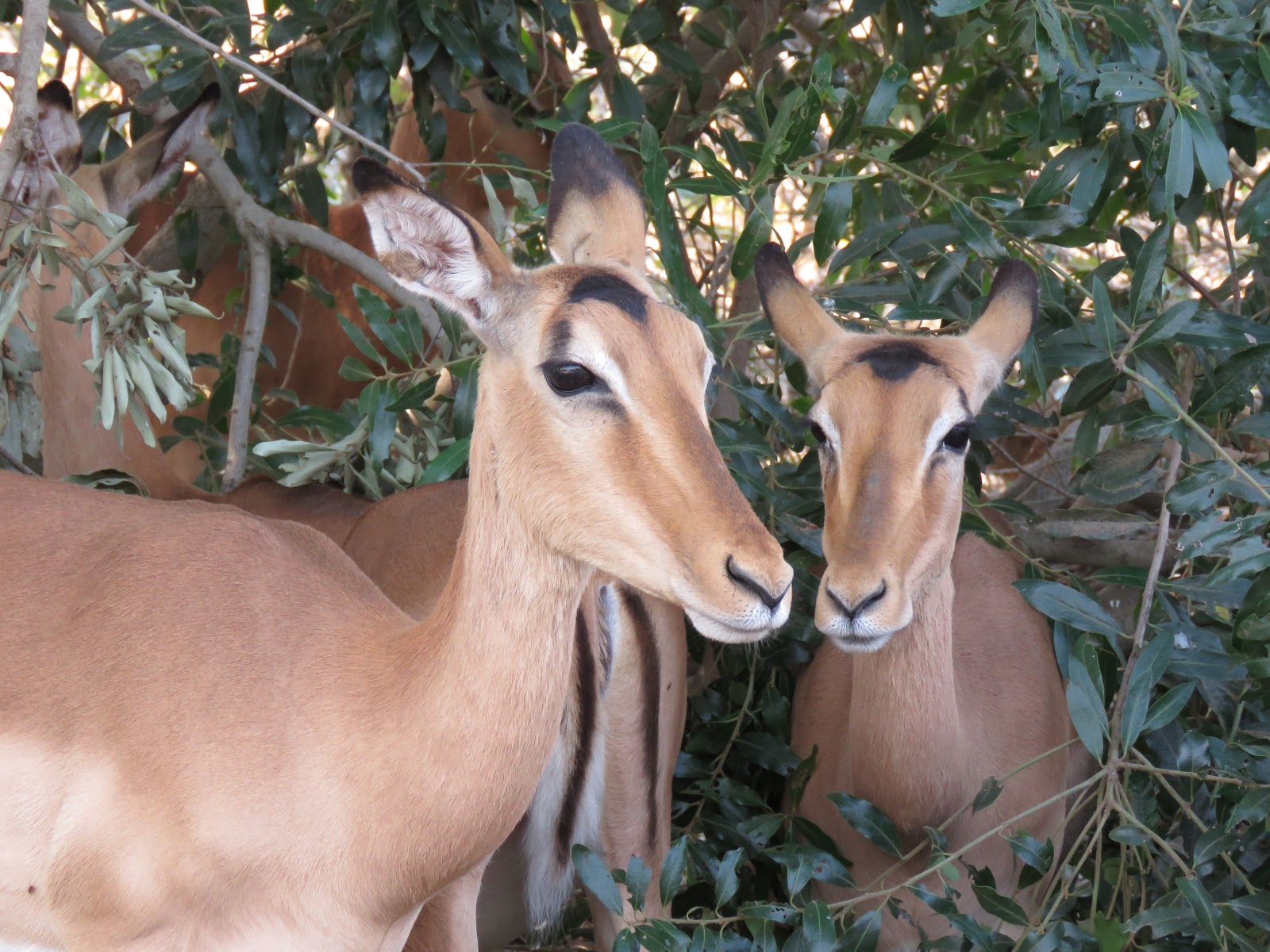 |
| This is Cupid with a heart-shaped marking on her throat. She was particularly loving the lucerne. |
Today’s photos are from the post on this date in 2018 in Marloth Park, South Africa when we had an extraordinary day with “visitors” to our garden. For more, please click here.
When I searched through all the December 11ths over the past eight years of world travel, to find which photos we’d highlight today, I stopped dead in my tracks when I encountered the photos from Marloth Park. Yes, I’ll admit, I needed a dose of wildlife as these remaining days in this hotel room slowly tick by.
 |
| Wildebeest Willie arrived in time to get in on the action. He ate quite a bit and then decided he’d sit on it only sharing with a warthog or two. |
Seeing these photos made my heart skip a beat along with a rush of feel-good hormones when it was impossible not to smile and laugh over these stunning kudus and their pleasure when eating the lucerne we had delivered from Daisy’s Den. We could almost detect smiles on their faces as shared here today.
Many times, over the past eight years I’ve written about the happy rush that comes from being up close and personal with wildlife. Obviously, not everyone has this same physiological response to wildlife. Others may experience such a feeling from watching a favorite sporting event, playing a game, reading a book, or even eating a particular food that elicits moans of joy and satisfaction.
 |
| The animals are so hungry, many residents have ordered lucerne to be delivered. Although we don’t like the idea of them sharing a food source due to potential health hazards, starvation in itself is a huge health hazard. |
It’s these types of experiences we’ve sought during these challenging times over the past nine months we’ve been trapped in this room. With our food options limited, we couldn’t glean any such feeling there. Nor, did we have access to any wildlife, other than a few birds we’d spot on the window ledge from time to time.
Weirdly, there have been a few shows we’ve streamed, that the moment the intro begins, we settle in to savor a special viewing experience. Right now, we’re entrenched in two series “The Crown,” (Netflix) and “This Is Us,” (Hulu) both of which we find ourselves settling into, in a mindless manner, each evening after dinner.
 |
| Daisy’s Den delivers the lucerne for ZAR 145 (US $10.05) Lucerne is: Oat, barley, and wheat plant materials occasionally cut green and made into hay for animal fodder. It’s a rich source of protein, carbohydrates, and minerals ideal for wildlife during the drought. |
Typically, before dinner, I put on my now worn-out pajamas and a pair of thick socks, white with gray soles, you know the kind they sell in Minnesota at Costco for those chilly winter nights? I put on those PJs early (I have two pairs which I’ll toss when we pack before we leave here), after I’m done walking for the day, in order to avoid getting food on my clothes, resulting in a little less annoying hand washing.
I make myself a cup of chamomile tea, grab my little black airline blanket, and nuzzle into my comfy chair. By this time, Tom is comfortably ensconced in bed, pillows supporting his back while we begin to watch these two shows, two episodes of each which takes us all the way to bedtime. It’s a “feel-good” thing that has helped us get through this confined period of time. Many other shows/series/movies we’ve streamed have fulfilled this objective as well.
 |
| While Mark, the owner of Daisy’s Den was still in our garden, 15 kudus arrived in minutes to begin devouring the lucerne with considerable enthusiasm. |
Maybe our lives of world travel have been a compilation of feel-good experiences; scenery, culture, people, wildlife, good food, and of course, an occasional “happy hour,” none of which has been prevalent in the past nine months. And yet, we anticipate where we’ll hopefully be in 33 days (well, actually 34 days until we actually arrive) and how all of the above will immediately be on hand for our enjoyment.
The warm welcome we’ll receive from the workers, shop owners, and friends we left behind in May 2019, a mere 19 months ago, that now seems like an eternity, will be our first “feel-good” experience upon arrival. The first friends we’ll see, most likely, will be Louise and Danie, our hosts, landlords, and amazing friends.
 |
| More and more kudus arrived to partake in the bale. |
From there, the balance will flood into our hearts and minds; as mentioned above. We can already taste that first bite of a juicy steak, that first sip of a favorite beverage, and the companionship that often goes with it. The lack of socialization since we arrived in India at the end of January 2020, almost 11 months (except for the six days we spent on the Maharajas Express train) has been prevalent for both of us. Obviously, we enjoy one another’s company, but the opportunity to interact with others will be savored.
There’s never been a time in either of our lives and we’re sure in many of your lives when we have been so lacking in “feel-good” experiences. Hopefully, soon, it will become a part of our daily life.
 |
| Then, there were 15 kudus with a few off to the sides. |
Be well. Be safe. Be happy. Be healthy.
Photo from one year ago today, December 11, 2019:
 |
| This classic car zoomed by during the Christmas parade at the park where we lived last year. For more, please click here. |

































